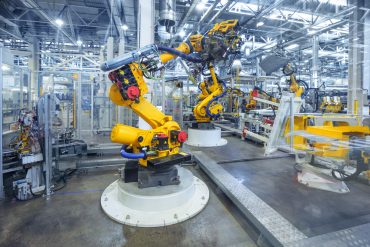
AR/VR using 5G may usher in changes for frontline workers’ jobs in the next wave of digital transformation in many organizations.
Augmented reality and virtual reality (AR/VR) mean more than fun and games. It is fast becoming a tool offering both realistic training and on-site support for workers in settings ranging from factory floors to hospital wards. But putting it in place and making it productive is more than an overnight sprint.
That’s the word from Dirck Schou, CEO of Taqtile, who in a recent interview with Food Processing, compares the impact of AR/VR – often called “immersive technologies” – for frontline workers’ jobs to the way information technology has reshaped that of knowledge workers. Implementation of AR and VR “involves large changes to the way that workers do their job,” he says, adding that he is seeing “a large number of manufacturers starting to look at this technology. And as more of those folks start to look at it, we start to see production use cases come out of the back end, and those are accelerating.”
See also: Augmented Reality Now Bringing IoT Data to Life for Frontline Workers
A survey conducted earlier this year by Perkins Cole bears this out. “Across a range of industries, respondents expect immersive technology to increasingly improve day-to-day operations, enhance efficiency, and improve outcomes. Seven out of 10 survey respondents said businesses will focus on workforce training and development when it comes to immersive technology implementation within the next 12 months.”
Training and development is a leading area for AR/VR due to a favorable and easily quantifiable “ROI of the upfront investment, payback period, and the resulting impact to the bottom line,” the study’s authors point out. “For example, an effective in-person training for a large company with employees around the world could be completed with immersive technologies without the cost of travel and lodging for participants — an advantage that might be even more pronounced amid global health concerns like the coronavirus. Simulated training scenarios in advanced manufacturing and healthcare are also drawing attention, not just for cost-saving opportunities but also because simulated training actually yields
better results and improved performance.”
Schou points to “the graying of the workforce” a major driver for the technology. “Over the next five to 10 years, aging workforce population of experts are going to be retiring and just not enough new people are coming in. The manufacturers are being forced to look for ways to very quickly ramp up the operational capability of the new workers. So, companies are thinking about training differently. They’re also needing to enable different types of workers in different systems” – especially with the growth of the Internet of Things and sensors generating data from every corner of a facility.
The main obstacles at this time to AR approaches, as cited in the Perkins Cole survey, include user experience issues (bulky hardware, technical glitches, cited by 32%), as well as issues with content offerings ( lack of quality content, amount of content available, cited by 18%). On the VR side, lack of content offerings is the main obstacle, cited by 27%.
Time and organizational complexity also can get in the way of AR/VR initiatives. Schou cautions that So, rolling out these technology solutions “can take many months or, even up to a year or even longer to fully implement it.”
However, frontline workers’ jobs may represent the next wave of digital transformation in many organizations. Previously, “the frontline worker in a manufacturer may have not had the benefit of transformative tools,” he continues. “If you can’t hold something, if you’re not sitting at a desk while you’re doing your job, there have been no tools for you until when it’s sort of the modern augmented reality headset for that matter. And that sort of digital transformation, that tool is going to change the job and the capability of the frontline worker in ways that we can’t even imagine over the next 10 years.”
Emerging 5G-based networks may open up the possibilities of AR/VR even further, Schou says. “5G has capabilities that far exceed the capabilities of standard Wi-Fi. If you think about deploying basically a wireless network on steroids in manufacturing facilities, getting to places where you couldn’t get to before with the network is really is going to change everything.” In addition, a 5G-based system could “connect to intelligent cloud solutions where you have your knowledge base stored, giving you access to expert knowledge and perhaps even connecting you to experts remotely. That can sort of help you through very challenging processes.”
Schou reports seeing real-world production implementations of AR/VR technology on shop floors. Enabling this trend is “accelerated development in the hardware available to deploy to frontline workers.” It also greatly enhances their productivity and ability to do multiple jobs, which robots may never even begin to replicate.






